Kajima Bundle
Who Really Owns Kajima Corporation?
Understanding a company's ownership is crucial for investors and strategists alike. It directly impacts decision-making, long-term vision, and overall performance. This article unravels the Kajima SWOT Analysis, exploring the intricate ownership structure of Kajima Corporation, a construction giant with a storied past.
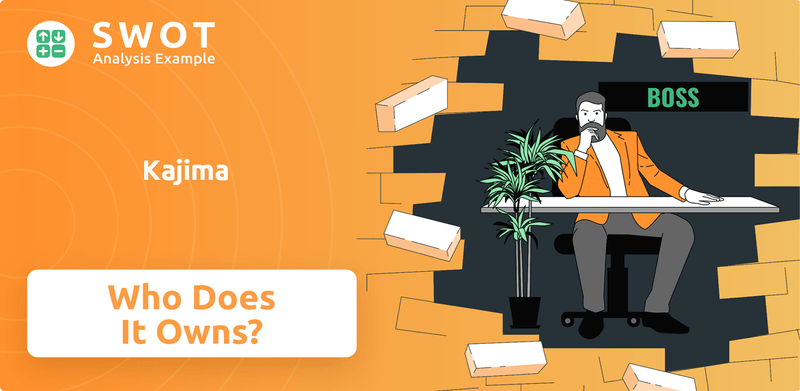
From its humble beginnings in 1840 as a carpentry business, Kajima has transformed into a global powerhouse. This exploration of Kajima Company ownership will shed light on its evolution, key shareholders, and the forces that have shaped its trajectory. Discover who controls Kajima Company and how its ownership structure influences its strategic direction, governance, and market position, including the Kajima Group's influence. This deep dive into Kajima Corporation owner details will provide valuable insights for anyone seeking to understand this industry leader.
Who Founded Kajima?
The roots of the company, now known as the Kajima Corporation, trace back to 1840. It was founded by Iwakichi Kajima, a skilled carpenter and designer in Edo, which is present-day Tokyo. His carpentry shop served as the initial base for what would become a major construction and real estate enterprise.
In the late 19th century, the company, then under the leadership of Iwazo Kajima, began to venture into railroad construction, operating under the name Kajima Gumi. This shift marked an important expansion of the company's activities. Later, the company became incorporated, which allowed for broader investment and greater capital for expansion.
The evolution of the company continued into the 20th century, with significant changes in its structure and leadership. The company was officially established as Kajima Construction Company in 1947. The family-led structure, with the firstborn typically inheriting the company, was a key element of its early governance.
Iwakichi Kajima founded the company in 1840. He was a carpenter and designer in Edo.
In 1880, Kajima Gumi started railroad construction. Iwazo Kajima, the second generation, led this expansion.
Kajima Gumi was incorporated on February 22, 1930. The initial capitalization was three million yen.
After World War II, the company was reorganized. It became Kajima Construction Company in 1947.
Seiichi Kajima became head in 1912 and Chairman in 1938. Morinosuke Kajima was appointed President in 1938.
The company's early structure was strongly family-led. The firstborn typically inherited the company.
Understanding the Kajima Company ownership structure involves recognizing its evolution from a family-run business to a publicly traded corporation. While specific details on early shareholding are not extensively available, the transition to a public company in 1930 allowed for broader investment. The company's history shows a blend of family leadership and the influence of shareholders. As a publicly traded company, the Kajima Group's ownership is distributed among various shareholders, including institutional investors and the public. The company's financial information, including annual reports, provides insights into the current ownership structure and key personnel. The headquarters of the Kajima Company is located in Japan. The company's subsidiaries and the overall Kajima Corporation owner structure reflect its extensive operations in the construction and real estate sectors. The Kajima Company stock ownership is now influenced by market dynamics. As of the latest available data, the major shareholders and who controls Kajima Company are detailed in its financial filings.
Kajima SWOT Analysis
- Complete SWOT Breakdown
- Fully Customizable
- Editable in Excel & Word
- Professional Formatting
- Investor-Ready Format
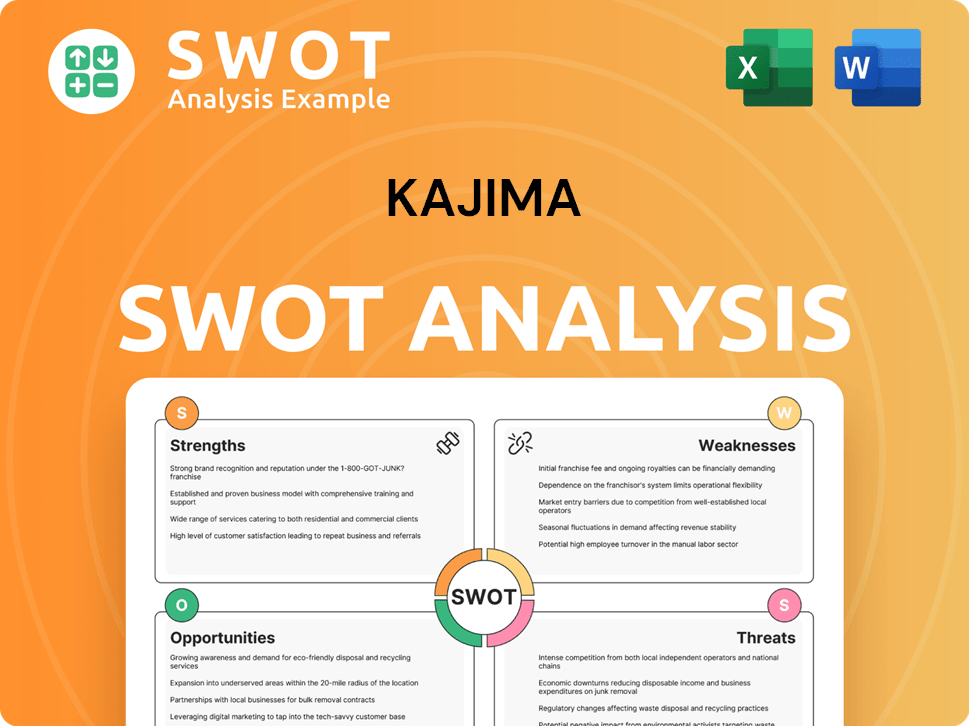
How Has Kajima’s Ownership Changed Over Time?
The ownership structure of the Kajima Company has evolved over time, with key milestones shaping its current form. A significant event was the initial public offering in 1961, when Kajima Corporation listed its shares on the Tokyo and Osaka Stock Exchanges. This move marked a shift towards a more dispersed ownership model, opening the door for institutional and individual investors to participate in the company's growth.
As of March 31, 2025, Kajima Corporation held 55,368 thousand shares as treasury stock, which impacts the available shares in the market and the overall ownership distribution. The influence of the founding family has also played a role, with figures like Rokuro Ishikawa, married to a daughter of a former president, holding key leadership positions, demonstrating the enduring legacy and influence of the Kajima family.
| Shareholder | Percentage of Ownership (as of) | Notes |
|---|---|---|
| Nomura Asset Management Co., Ltd. | 4.23% (June 5, 2025) | A significant institutional investor. |
| The Vanguard Group, Inc. | 2.99% (April 30, 2025) | A notable institutional investor. |
| Daiwa Asset Management Co. Ltd. | 1.94% (April 30, 2025) | Another key institutional investor. |
| Nikko Asset Management Co., Ltd. | 1.87% (June 6, 2025) | A key institutional investor. |
| BlackRock Fund Advisors | 1.69% (June 5, 2025) | A significant institutional investor. |
The major shareholders of Kajima Corporation include several prominent institutional investors. Nomura Asset Management Co., Ltd. held 4.23% of the shares as of June 5, 2025, making it a significant stakeholder. The Vanguard Group, Inc. held 2.99% as of April 30, 2025, and Daiwa Asset Management Co. Ltd. held 1.94% as of April 30, 2025. Nikko Asset Management Co., Ltd. held 1.87% as of June 6, 2025, and BlackRock Fund Advisors held 1.69% as of June 5, 2025. Other institutional holders include Norges Bank Investment Management (1.50% as of December 31, 2024), Mitsubishi UFJ Asset Management Co., Ltd. (1.03% as of June 5, 2025), and Geode Capital Management LLC (0.82% as of June 6, 2025). Understanding the Kajima Company ownership structure provides insights into its governance and strategic direction. For further details on the company's business model, consider exploring the Revenue Streams & Business Model of Kajima.
Understanding the ownership of Kajima Corporation is crucial for investors and stakeholders.
- The company is publicly listed, with shares traded on the Tokyo and Osaka Stock Exchanges.
- Major institutional investors hold significant stakes in the company.
- The founding family's influence has historically been important.
- The treasury stock impacts the available shares in the market.
Kajima PESTLE Analysis
- Covers All 6 PESTLE Categories
- No Research Needed – Save Hours of Work
- Built by Experts, Trusted by Consultants
- Instant Download, Ready to Use
- 100% Editable, Fully Customizable
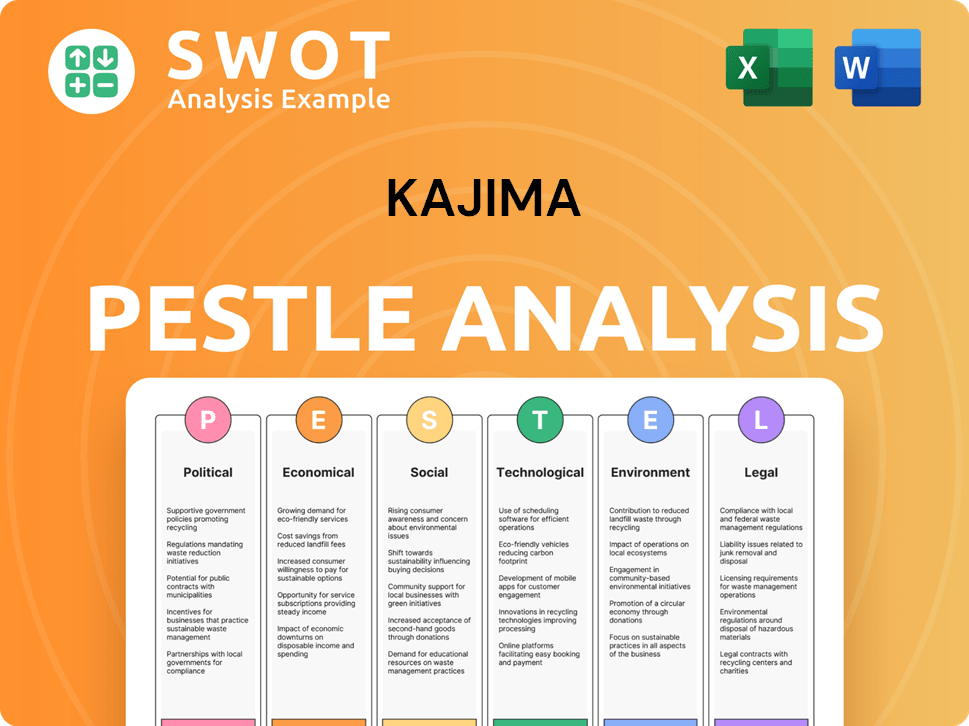
Who Sits on Kajima’s Board?
The board of directors of Kajima Corporation, as determined after the Ordinary Stockholders' Meeting on June 27, 2025, includes both internal and external members. Hiromasa Amano serves as the President and Representative Director, a position he has held since January 2021. The company emphasizes the effective use of independent directors, mandating that at least one-third of the Board of Directors are independent Outside Directors to boost supervisory functions and improve management transparency. As of February 17, 2025, Kiyomi Saito was a retiring outside director, with Yuko Yasuda nominated as a new candidate for Outside Director.
The composition of the board reflects Kajima's commitment to a governance structure that balances internal leadership with external oversight, ensuring accountability to Kajima shareholders and stakeholders. This structure is designed to support the company's strategic objectives and maintain a high standard of corporate governance, which is crucial for long-term sustainability and investor confidence. The focus on independent directors underscores the company's dedication to transparency and effective corporate governance practices.
| Director | Title | Appointment Date |
|---|---|---|
| Hiromasa Amano | President and Representative Director | January 2021 |
| Kiyomi Saito | Outside Director (Retiring) | N/A |
| Yuko Yasuda | Nominated Outside Director | N/A |
Kajima Corporation allows shareholders to exercise their voting rights via the internet or by mailing a Voting Rights Exercise Form, with a deadline of June 26, 2025, for the 128th Ordinary Stockholders' Meeting. The company also uses the Electronic Voting Platform for institutional shareholders. This approach ensures that Kajima shareholders, including both individual and institutional investors, can easily participate in the decision-making processes of the company. This commitment to shareholder engagement is a key aspect of Kajima's corporate governance framework, reflecting its dedication to transparency and stakeholder respect. For more insights into the company's strategic direction, you can explore the Growth Strategy of Kajima.
The Kajima Group's ownership structure involves a board of directors with a mix of internal and external members, ensuring a balance of perspectives. The company emphasizes independent directors to enhance oversight and transparency. Shareholders can vote online or by mail, promoting broad participation.
- Hiromasa Amano is the President and Representative Director.
- The company uses an Electronic Voting Platform for institutional shareholders.
- Kajima aims for transparency and stakeholder respect in its governance.
- The board includes independent Outside Directors.
Kajima Business Model Canvas
- Complete 9-Block Business Model Canvas
- Effortlessly Communicate Your Business Strategy
- Investor-Ready BMC Format
- 100% Editable and Customizable
- Clear and Structured Layout
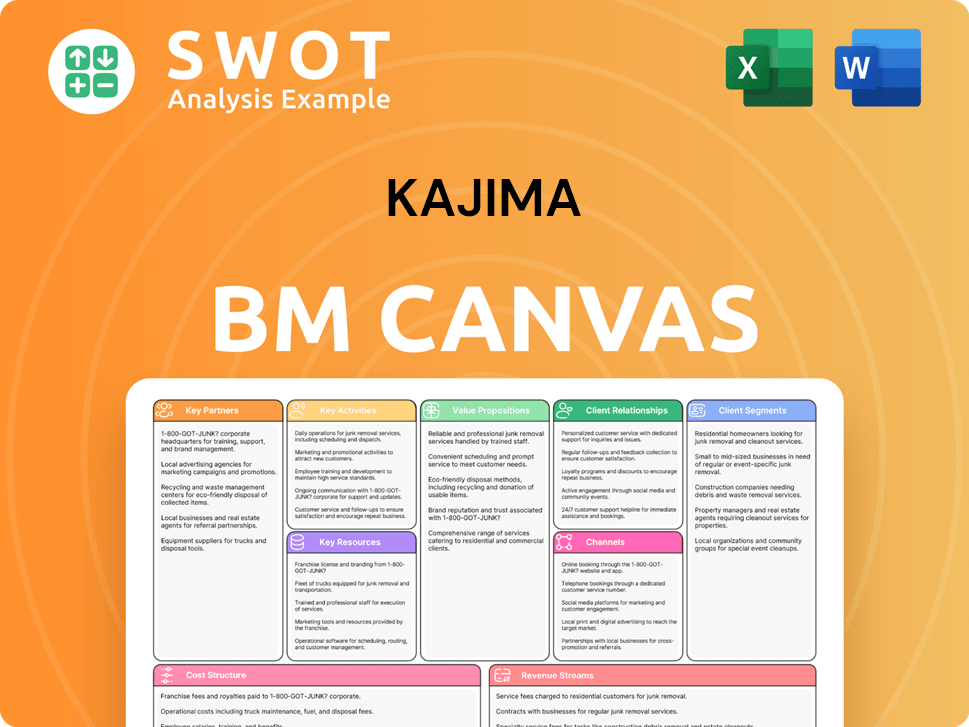
What Recent Changes Have Shaped Kajima’s Ownership Landscape?
In recent years, the Kajima Company ownership structure has seen active management through strategic initiatives. The company has focused on enhancing shareholder returns, as demonstrated by share buybacks and dividend increases. For instance, Kajima authorized a share buyback for 9,000,000 shares, representing 1.9% of issued shares, with an acquisition price of up to 20 billion Japanese yen, from May 15, 2025, to September 30, 2025. This follows a previous buyback in 2024, where 11,132,800 shares were acquired for nearly 30 billion yen.
The Kajima Corporation owner has shown a commitment to improving shareholder value. The company anticipates a record high consolidated net income of 130.0 billion yen for the fiscal year ending March 31, 2025, marking the fifth consecutive year of growth. Additionally, Kajima plans to increase its dividend from ¥104 to ¥112, marking the sixth consecutive year of dividend hikes, based on a 40% dividend payout ratio policy. These moves reflect a strategic approach to ownership and financial performance, as highlighted in a detailed analysis of the Marketing Strategy of Kajima.
The stock price of Kajima Corp (1812:TYO) closed at 3,620.00 on June 14, 2025, and reached a 52-week high of 3,765.00 on June 9, 2025. The company's reduction of strategic shareholdings to below 20% of consolidated net assets ahead of schedule further indicates a shift in ownership dynamics. These actions collectively shape the landscape of Who owns Kajima and its future trajectory.
Kajima has implemented strategic share buybacks to enhance shareholder value. These buybacks involve repurchasing the company's own shares from the open market. The goal is to increase the value of the remaining shares by reducing the total number of outstanding shares.
The company has consistently increased its dividends to reward shareholders. Dividend payouts are a portion of a company's earnings distributed to shareholders. Kajima's commitment to raising dividends reflects its financial health and dedication to returning value to its investors.
Kajima has been strategically managing its shareholdings. This involves adjusting the proportion of shares held by various entities, including the company itself. These adjustments are often made to optimize the company's capital structure and improve shareholder value.
The company's financial performance is strong, with record-high consolidated net income projected. This positive financial outlook supports the company's ability to undertake share buybacks and dividend increases. Strong financial results are crucial for maintaining investor confidence.
Kajima Porter's Five Forces Analysis
- Covers All 5 Competitive Forces in Detail
- Structured for Consultants, Students, and Founders
- 100% Editable in Microsoft Word & Excel
- Instant Digital Download – Use Immediately
- Compatible with Mac & PC – Fully Unlocked
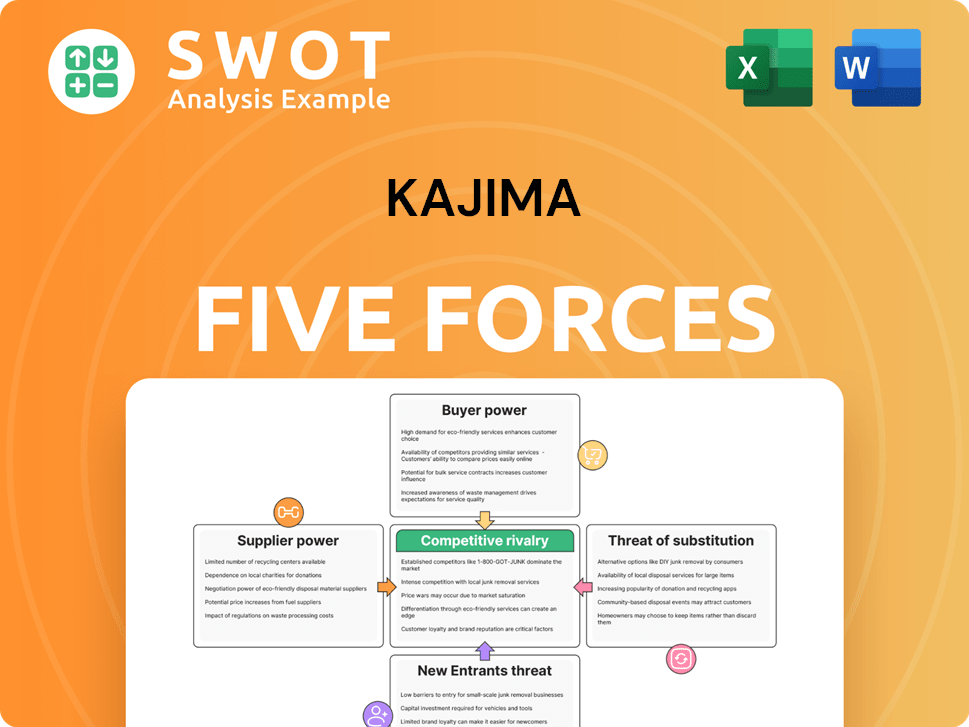
Related Blogs
- What are Mission Vision & Core Values of Kajima Company?
- What is Competitive Landscape of Kajima Company?
- What is Growth Strategy and Future Prospects of Kajima Company?
- How Does Kajima Company Work?
- What is Sales and Marketing Strategy of Kajima Company?
- What is Brief History of Kajima Company?
- What is Customer Demographics and Target Market of Kajima Company?
Disclaimer
All information, articles, and product details provided on this website are for general informational and educational purposes only. We do not claim any ownership over, nor do we intend to infringe upon, any trademarks, copyrights, logos, brand names, or other intellectual property mentioned or depicted on this site. Such intellectual property remains the property of its respective owners, and any references here are made solely for identification or informational purposes, without implying any affiliation, endorsement, or partnership.
We make no representations or warranties, express or implied, regarding the accuracy, completeness, or suitability of any content or products presented. Nothing on this website should be construed as legal, tax, investment, financial, medical, or other professional advice. In addition, no part of this site—including articles or product references—constitutes a solicitation, recommendation, endorsement, advertisement, or offer to buy or sell any securities, franchises, or other financial instruments, particularly in jurisdictions where such activity would be unlawful.
All content is of a general nature and may not address the specific circumstances of any individual or entity. It is not a substitute for professional advice or services. Any actions you take based on the information provided here are strictly at your own risk. You accept full responsibility for any decisions or outcomes arising from your use of this website and agree to release us from any liability in connection with your use of, or reliance upon, the content or products found herein.